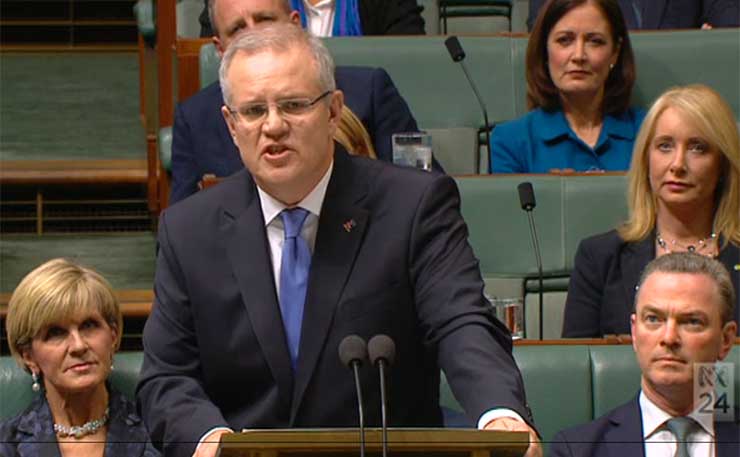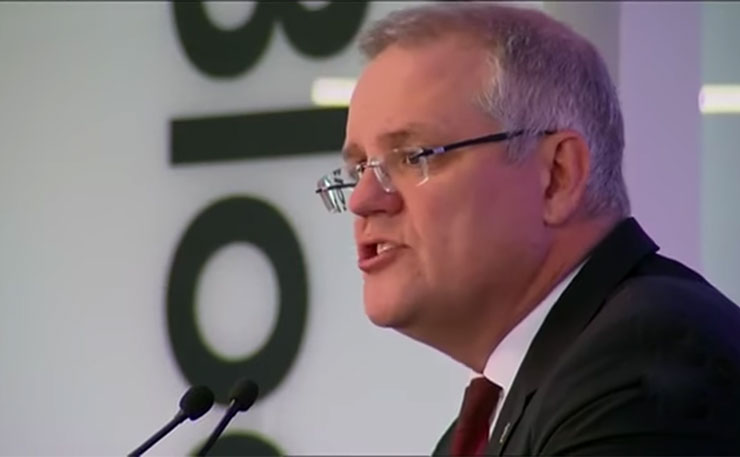The Turnbull Government brags about strong employment growth. Ian McAuley points out that it will not be sustained unless we properly fund education, health care and other government services.
Like a Kommissar for Employment in a Stalinist centrally-planned economy, Treasurer Scott Morrison prattles on about the jobs the Coalition Government has “created”.
Since the Turnbull Government scraped into office, employment has indeed risen. Over the 15 months from August 2016 to November 2017 (the latest available data) employment has risen by 380,000 in seasonally-adjusted terms. That’s an annualised growth rate of 2.9 per cent, well clear of the 1.6 per cent annual growth of the working-age population.
But that doesn’t give Morrison bragging rights.
For a start, it follows miserable employment growth over the previous three years. Over that period as the mining boom ran out of puff, employment growth struggled to keep up with population growth.
Second, and more fundamentally, there is little a government can do in the short term to “create” jobs. Government policy does influence economic growth and therefore it influences employment, but only with a lag. The new jobs emerging in 2017 or 2018 are more influenced by government policies stretching back decades, rather than anything done by the incumbent government.
Also there are strong international forces influencing the performance of the Australian economy, particularly the fluctuating demand for commodities. Morrison may have been too busy protecting Australia from same-sex marriage or from refugees coming by boat to have noticed that in 2017, the world growth rate, particularly in “developed” countries, picked up sharply.
Third, we learn a bit about the drivers of employment growth when we look at the composition of those 380,000 jobs.
The strongest growth has been in three sectors – construction, health care and education. These sectors account for three quarters of the net employment growth over the 15-month period.
Rises and falls in employment by sector are shown in the graph below.

In view of the extraordinary breaks the Coalition has given to housing speculators, the construction boom is hardly surprising. A glance at the building skylines of our capital cities confirms that sector’s strong activity. Also, in Sydney, Melbourne and Adelaide, in a belated attempt to match our infrastructure to population growth, there are major road and rail projects.
The other two big employment growth sectors, health and education, are largely in or financed by the public sector. Many commentators have mentioned the National Disability Insurance Scheme in this regard.
What is happening, ironically for a conservative government, is a growth in labour-intensive activities in the public sector, and a loss of employment in many activities in the private sector.
That is not in line with the Coalition’s idea of how the world should work, but it is in line with a theory spelled out by the economist William Baumol in the 1960s.
Baumol pointed out that new technologies allow for improvements in labour productivity in many sectors of the economy, but not in all sectors. Mechanisation, and more recently the adoption of ICT technologies, have made for significant labour displacement in manufacturing, distribution and clerical activities.
But some activities involving human interaction necessarily remain labour-intensive, almost by definition. There have been labour-saving technologies in education, health care, and entertainment, but the essential functions in these sectors remain labour-intensive. (Baumol in his original work tried to imagine how live theatre could operate with fewer actors!)
That’s the scenario being played out in Australia. Even as manufacturing activity picks up in some areas, manufacturing employment is falling. ICT technologies continue to displace clerical jobs, and on-line shopping is bypassing activities such as wholesale trade.

These developments explain, in part, sluggish wage growth and worsening inequality in the Australian economy (the rest of the explanation lies in the government’s relentless attacks on unions and lax enforcement of employment standards, but that’s another story). Employment in some well-paid industries, such as finance and mining, has fallen or stagnated, while there has been growth in highly-competitive and poorly-paid industries such as retailing and food service. (This also helps explain the changing gender-composition of the workforce.)
Morrison, his colleagues in the Coalition, his supporters in the Murdoch media, and gullible journalists who don’t look beyond headline figures, are deluded if they believe this employment expansion will endure under the government’s current policy settings, which are to cut taxes and public spending.
Coalition politicians are always hoping that the private sector will take up any employment slack, but that’s wishful thinking. In spite of ongoing policy bribes to housing speculators, the construction boom, particularly of high-rise apartments, is coming to an end. And job displacement through technical change still has a long way to go. Many jobs in retail, real-estate, finance and legal services are precarious, and technologies such as trucks, fork lifts and earth-moving machinery without drivers are only now starting to displace jobs.
This would not be a problem if we had an economy with a proper balance between the public and private sectors – if we weren’t gripped by the dogma that there is something economically virtuous about “small government” and by the false belief that Australia is a heavily-taxed country.
It’s quite natural that as prices fall for cars, appliances, travel and other goods and services benefiting from labour productivity, that we should come to demand more of those services that remain high-cost and labour-intensive. These include teaching children, caring for the aged, providing health care, protecting our neighbourhoods, teaching and researching in our universities and research institutions, and repairing damaged ecosystems.
It’s all work that, because of various forms of market failure, is best done in or funded by the public sector. But our government paternalistically tells us that we’d somehow be better off without these services, or, if we insist on having them, that we should rely on high-cost, inefficient and inequitable private sector substitutes, such as private health insurance.
The most efficient and equitable policy is to expand public funding and provision of these services, but we’re already running high budget deficits at the Commonwealth level and state governments are all financially stressed (anyone who believes that the Coalition accrues smaller fiscal deficits than Labor, should look at the figures in the recently-released Mid-Year Economic and Fiscal Outlook).
But as one of the “developed” world’s lowest-taxed countries we have plenty of capacity to raise taxes to fund these services. That would reduce inequality in three ways. One way is through the services themselves, because health and education are an important part of the social wage. Another is through a well-designed progressive tax system, eliminating perks and rorts for the well-off, and taxing greenhouse gas emissions. And the third is through providing good jobs in these sectors. Not “makework” jobs, or poorly-paid work in the gig economy, but real jobs providing valuable services.
That’s the reality which in this pre-election period the Coalition denies and which Labor avoids.
Donate To New Matilda
New Matilda is a small, independent media outlet. We survive through reader contributions, and never losing a lawsuit. If you got something from this article, giving something back helps us to continue speaking truth to power. Every little bit counts.




